Q: My horse’s trot is irregular and feels uncollected. How can I make it smoother and more collected?
- Rhythm
- Suppleness/Relaxation
- Connection
- Impulsion
- Straightness
- Collection
First, be sure your horse is absolutely sound. Hoof sensitivity and other soundness problems can cause a horse to take shorter and more irregular strides.
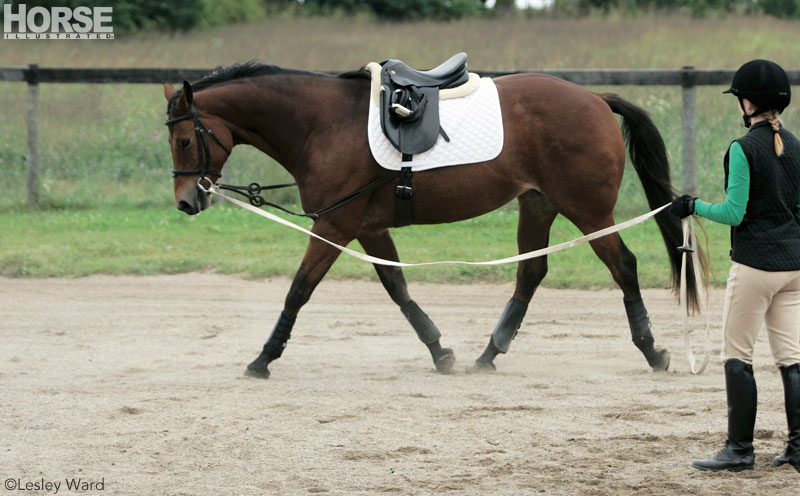
Start by working on regularity of the rhythm of the three gaits. In order to improve the regularity of your horse’s trot, I would recommend that you longe him in a saddle, snaffle bridle and side reins, using a 32-foot longeline and a good, long longe whip. If you don’t know how to longe, the United States Dressage Federation (USDF) Instructor Certification Lungeing Manual is inexpensive and can be ordered online through the USDF website (www.usdf.org). If you have an instructor who is good at longeing, I would also recommend getting his or her help. It’s much more difficult than it looks!
When longeing your horse, the tempo of his trot can gradually be regulated and made more active and forward if he is lazy, or slowed down if he is tense and rushing. It’s nice for a horse to learn the correct tempo on the longeline because he doesn’t have to carry a rider’s weight. And staying on the same 20-meter circle for five to seven minutes in each direction gives him more time to settle into a correct rhythm.
Once he is maintaining the tempo that is correct for him—in which he is tracking up, relaxing through his topline into a round frame, swinging through his back, and staying nicely out on the circle making contact with the longeline and side reins—he should be able to go like this when ridden.
The next step is to begin riding your horse after a short warm-up on the longeline. It’s good to have a ground person or instructor who can help you match the tempo you accomplished on the longeline.
When the regularity of the trot becomes easier to establish, you will simultaneously be working successfully on the next two levels of the training scale: suppleness/relaxation and connection, which refers to your horse’s acceptance of contact with the bit and your hands. When all of these things are beginning to work for you, you can add a little impulsion (push from behind), and his gaits should show improvement.
These skills have to be well-established before a horse is ready for collection. Additionally, the muscle development necessary for a horse to execute collection is built up through the first four elements of the training scale—and it takes months, even years, to accomplish. In other words, collection depends on well-established basics. Good basics take time, but instilling them in a horse’s training is the mark of a really good trainer and a happy horse.
Liked this article? Here are others you’ll enjoy:
Sitting Trot in Style
How to Longe Your Horse
CINDY SYDNOR has been an examiner for the United States Dressage Federation (USDF) instructor/trainer program for 20 years and spent 35 years as a United States Equestrian Federation “R” dressage judge. She and her husband live in Snow Camp, N.C. Currently, Cindy owns and rides four horses and keeps busy by teaching and giving clinics.
This article originally appeared in the October 2013 issue of Horse Illustrated magazine. Click here to subscribe!

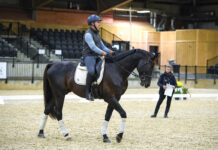
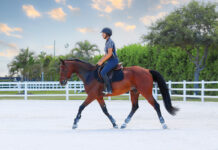
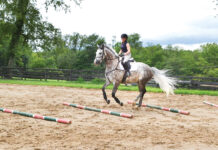

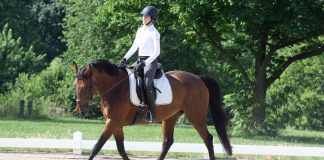

I think more people should try just standing in the stirrups at the trot. That’s how I was taught and it takes most of the bounce out and keeps you from flopping around and getting off balance.
good tips!
I hope it will be as easy as the article makes it sound. Thank You HC for all the good articles.
Great advice.
nice